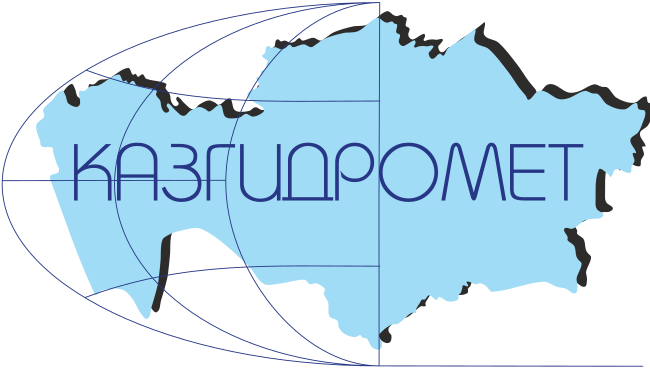RESULTS OF MODELLING OF SNOW WATER EQUIVALENT WITH USING MODSNOW MODEL IN ESIL RIVER MANAGEMENT BASIN
DOI:
https://doi.org/10.54668/2789-6323-2023-111-4-7-15Keywords:
snow, climate, degree-day factor, calibration, validation, KazakhstanAbstract
The article presents the results of modeling of snow water equivalent using the V03 module of the MODSNOW model, based on the empirical modeling method, for the territory of the Esil water management basin for 1980-2021 periods. The multi-year period was divided into two equal parts: 1980-1999 for model calibration, 2000-2021 for model validation. For this purpose, 20 meteorological stations located in the section of the water management basin, which have continuous input daily data of average daily air temperature, precipitation, snow cover height and ten-day data of snow water equivalent, were selected. The results of model calibration and validation for reproducibility were evaluated by Nash-Sutcliffe, RSR, and PBIAS criteria. Good reproducibility of modeled snow water equivalent at the meteorological stations Blagoveshenka, Balkashino, Sergeevka, Stepnogorsk, Yavlenka, Bulayevo was revealed; for these stations the results corresponded to the "good" reproducibility rating. It is concluded that the model for these stations can be used for short-, medium- and long-term forecasting of snow water equivalent.
References
ASCE. 1993. Criteria for evaluation of watershed models. J. Irrigation Drainage Eng. 119(3): 429-442.
Barandun Martina, Fiddes Joel, Scherler Martin, Mathys Tamara, Saks Tomas, Petrakov Dmitry, Hoelzle Martin, The state and future of the cryosphere in Central Asia, Water Security, Volume 11, 2020, 100072, ISSN 2468-3124, https://doi.org/10.1016/j.wasec.2020.100072.
Clark, M. P., Hendrikx, J., Slater, A. G., Kavetski, D., Anderson, B., Cullen, N. J., Kerr, T., Örn Hreinsson, E., and Woods, R. A. (2011), Representing spatial variability of snow water equivalent in hydrologic and land-surface models: A review, Water Resour. Res., 47, W07539, https://doi.org/10.1029/2011WR010745
Chu, T. W., and A. Shirmohammadi. 2004. Evaluation of the SWAT model’s hydrology component in the piedmont physiographic region of Maryland. Trans. ASAE 47(4): 1057-1073.
Gafurov A., Lu¨dtke S., Unger-Shayesteh K., Vorogushyn S., Scho¨ne T., Schmidt S., Kalashnikova O., Merz B. MODSNOW-Tool: an operational tool for daily snow cover monitoring using MODIS data // Environ Earth Sci (2016) 75:1078 DOI 10.1007/s12665-016-5869-x.
Gerlitz, L., E. Steirou, C. Schneider, V. Moron, S. Vorogushyn, and B. Merz, 2019: Variability of the Cold Season Climate in Central Asia. Part II: Hydroclimatic Predictability. J. Climate, 32, 6015–6033, https://doi.org/10.1175/JCLI-D-18-0892.1.
Martinec, J. 1960. The degree-day factor for snowmelt runoff forecasting. IUGG General Assembly of Helsinki, IAHS Publ. No. 51, 468-477.
Moriasi D. N., Arnold J. G., Van Liew M. W., Bingner R. L, Harmel R.D., Veith T.L. Model evaluation guidelines for systematic quantification of accuracy in watershed simulations. American Society of Agricultural and Biological Engineers, 2007, Vol. 50(3): 885−900.
Rosa, J. 1956. Forest snowmelt and spring floods. J. Forestry 54 (4).
Sevat, E., and A. Dezetter. 1991. Selection of calibration objective functions in the context of rainfall-runoff modeling in a Sudanese savannah area. Hydrological Sci. J. 36(4): 307-330.
Singh, J., H. V. Knapp, and M. Demissie. 2004. Hydrologic modeling of the Iroquois River watershed using HSPF and SWAT. ISWS CR 2004-08. Champaign, Ill.: Illinois State Water Survey. Available at: www.sws.uiuc.edu/pubdoc/CR/ ISWSCR2004-08.pdf.
Walter M. Todd, Brooks Erin S., McCool Donald K., King Larry G., Molnau Myron, Boll Jan, Process-based snowmelt modeling: does it require more input data than temperature-index modeling?, Journal of Hydrology, Volume 300, Issues 1–4, 2005, Pages 65-75, ISSN 0022-1694, https://doi.org/10.1016/j.jhydrol.2004.05.002.
WMO Guide to hydrological Practices, Vol. II, Management of water resources and application of hydrological practices, WMO-No. 168, 2009, 302.
Zhang Q., Chen Y., Li Zh., Fang G., Xiang Y., Li Y., Ji H. Recent Changes in Water Discharge in Snow and Glacier Melt-Dominated Rivers in the Tienshan Mountains, Central Asia. Remote Sens. 2020, 12, 2704; https://doi.org/10.3390/rs12172704.





